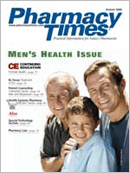Publication
Article
Pharmacy Times
Volume00
Prescription Drug Abuse Is Escalating
As abuse of prescription drugs continues to climb, a new study revealed some interesting findings. The study, Under the Counter: The Diversion and Abuse of Controlled Prescription Drugs in the US, defined prescription drug abuse as the taking of prescription drugs not prescribed for the user, or the use of prescription drugs taken only for the experience or feeling it causes. The 214-page report by the National Center on Addiction and Substance Abuse at Columbia University polled pharmacists (n = 1030) and physicians (n = 979) separately. The major findings concerning pharmacists include:
- 30% of pharmacists do not regularly confirm the physician's information (physician's federal narcotic number) when dispensing controlled drugs
- 61% do not regularly ask if the patient is taking any other controlled drugs when dispensing a controlled medication
- 51.8% of pharmacists believe that patients account for the bulk of the diversion problem
- 78.4% of pharmacists become somewhat or very concerned about diversion or abuse when a patient asks for a controlled drug by its brand name
- Only 48.1% of pharmacists received any training in preventing drug diversion, and only 49.6% in identifying abuse or addiction, since pharmacy school
The results were similar among the physicians polled. The survey's key findings include:
- 43.3% of physicians do not ask about prescription drug abuse when taking a patient's medical history
- 33% do not regularly call or obtain records from the patient's previous (or other treating) physicians before prescribing controlled drugs on a long-term basis
- 59.1% of physicians believe that patients account for the bulk of the diversion problem
- Only 19.1% of physicians received any medical school training in identifying prescription drug diversion
- Only 39.6% of physicians received any training in medical school in identifying prescription drug abuse and addiction
Articles in this issue

CAN YOU READ THESE Rxs?
Business Booms for Automated Pharmacy
SureScripts Program Gains Momentum
Alliance Expands Hospital Options
Initiative Promotes E-Prescribing
Medical Center Activates SafetyMed RN
Compounding Hotline
Prostate Health Considerations: The Pharmacist's Role
Mobile Technology with Stellara
Cardinal Health Upgrades Automation
Tools Let Pharmacists Provide "Gold Standard" Counseling
Robot Helps Pharmacists Grow Business, Still Provide Service
Expert Opinions: Sometimes Required and Sometimes Not
Constipation Is Costly
Small Intestinal Bacterial Overgrowth in IBS






